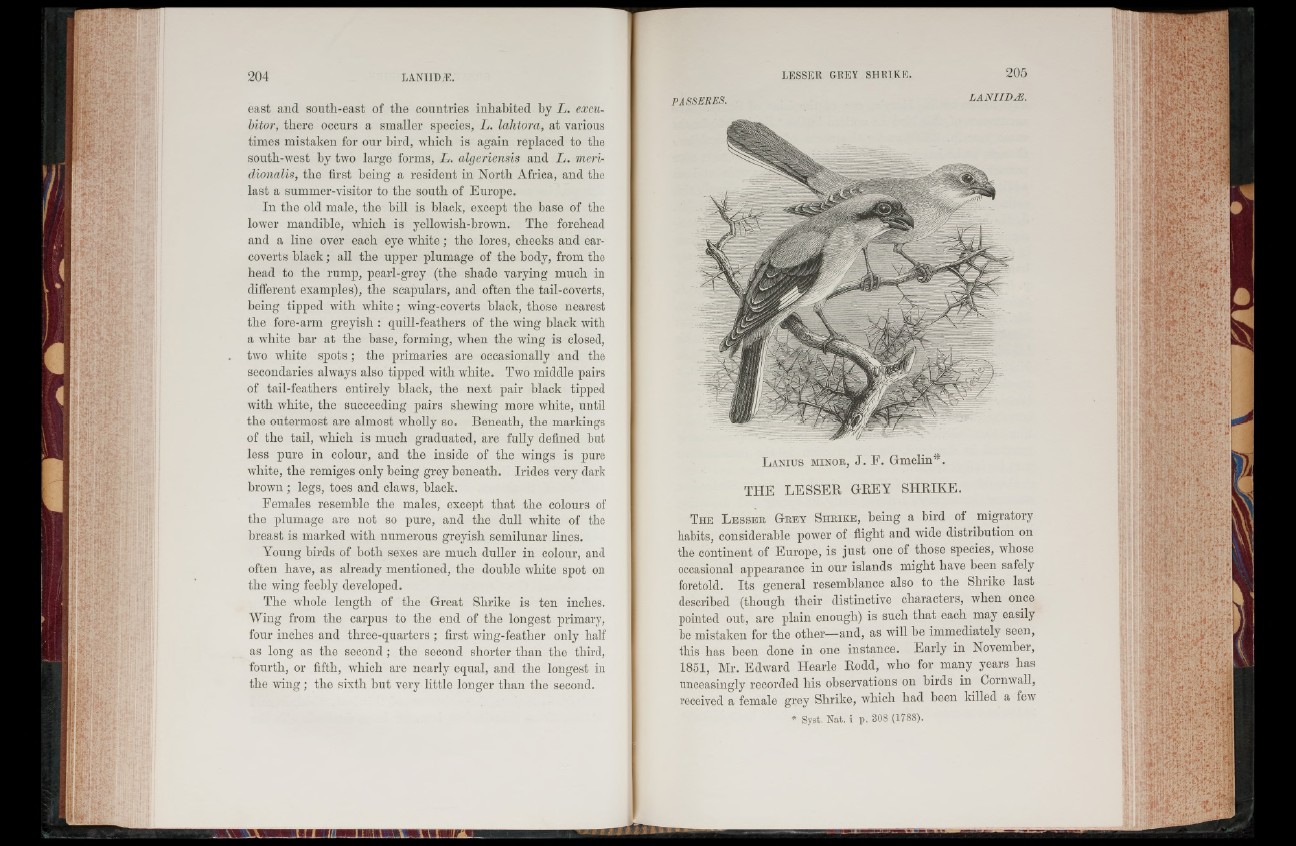
east and south-east of the countries inhabited by L . excu-
bitor, there occurs a smaller species, L. lahtora, at various
times mistaken for our bird, which is again replaced to the
south-west by two large forms, L . algeriensis and L . meri-
dionalis, the first being a resident in North Africa, and the
last a summer-visitor to the south of Europe.
In the old male, the hill is black, except the base of the
lower mandible, which is yellowish-brown. The forehead
and a line over each eye white; the lores, cheeks and ear-
coverts black; all the upper plumage of the body, from the
head to the rump, pearl-grey (the shade varying much in
different examples), the scapulars, and often the tail-coverts,
being tipped with white; wing-coverts black, those nearest
the fore-arm greyish : quill-feathers of the wing black with
a white bar at the base, forming, when the wing is closed,
two white spots; the primaries are occasionally and the
secondaries always also tipped with white. Two middle pairs
of tail-feathers entirely black, the next pair black tipped
with white, the succeeding pairs shewing more white, until
the outermost are almost wholly so. Beneath, the markings
of the tail, which is much graduated, are fully defined but
less pure in colour, and the inside of the wings is pure
white, the remiges only being grey beneath. Irides very dark
brown ; legs, toes and claws, black.
Females resemble the males, except that the colours of
the plumage are not so pure, and the dull white of the
breast is marked with numerous greyish semilunar lines.
Young birds of both sexes are much duller in colour, and
often have, as already mentioned, the double white spot on
the wing feebly developed.
The whole length of the Great Shrike is ten inches.
Wing from the carpus to the end of the longest primary,
four inches and three-quarters ; first wing-feather only half
as long as the second; the second shorter than the third,
fourth, or fifth, which are nearly equal, and the longest in
the wing ; the sixth hut very little longer than the second.
L a n iu s m in o r , J. F. Gmelin*.
THE LESSER GREY SHRIKE.
T h e L e s s e r G r e y S h r i k e , being a bird of migratory
habits, considerable power of flight and wide distribution on
the continent of Europe, is just one of those species, whose
occasional appearance in our islands might have been safely
foretold. Its general resemblance also to the Shrike last
described (though their distinctive characters, when once
pointed out, are plain enough) is such that each may easily
be mistaken for the other—and, as will be immediately seen,
this has been done in one instance. Early in November,
1851, Mr. Edward Hearle Rodd, who for many years has
unceasingly recorded his observations on birds in Cornwall,
received a female grey Shrike, which had been killed a few
* Syst. Nat. i p. 308 (1788).